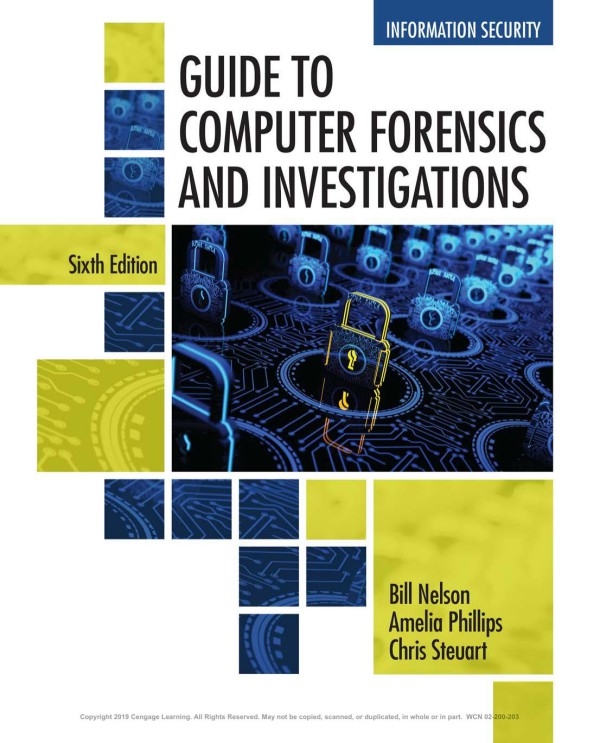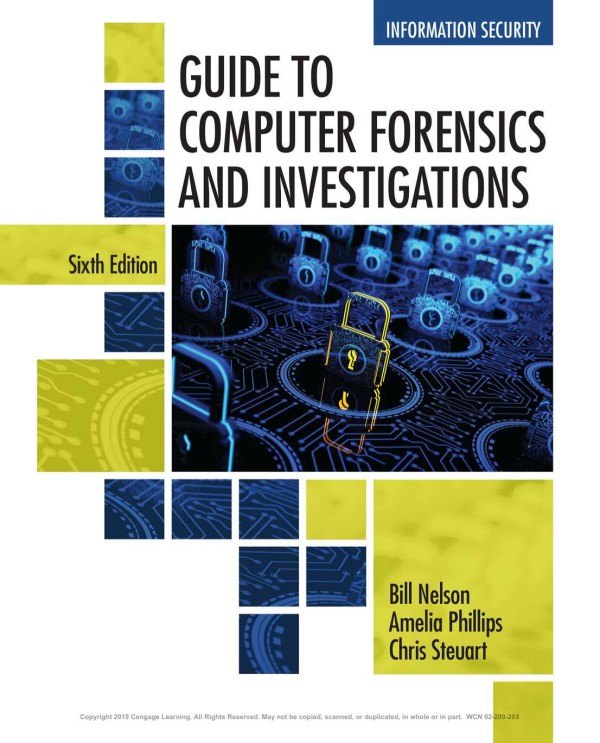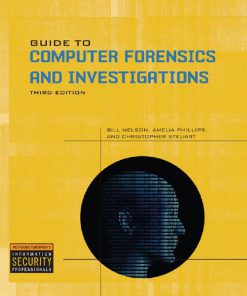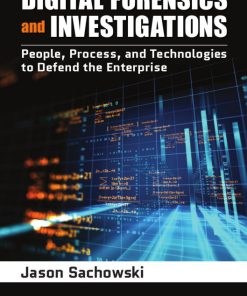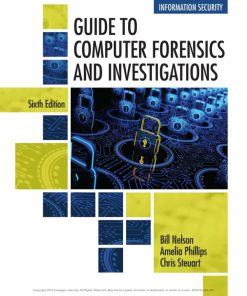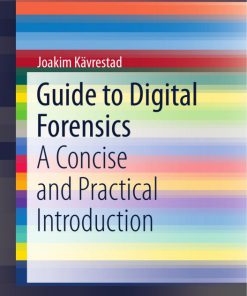Guide to Computer Forensics and Investigations 6th edition by Bill Nelson, Amelia Phillips, Christopher Steuart ISBN 1337568945 978-1337568944
Original price was: $50.00.$25.00Current price is: $25.00.
Authors:Bill Nelson; Amelia Phillips; Christopher Steuart , Series:Cyber Security [268] , Tags:Computers; Security; General , Author sort:Nelson, Bill & Phillips, Amelia & Steuart, Christopher , Ids:Google; 9781305176089 , Languages:Languages:eng , Published:Published:Nov 2014 , Publisher:Cengage Learning , Comments:Comments:Updated with the latest advances from the field, GUIDE TO COMPUTER FORENSICS AND INVESTIGATIONS, Fifth Edition combines all-encompassing topic coverage, authoritative information from seasoned experts, and real-world applications to deliver the most comprehensive forensics resource available. This proven author team’s wide ranging areas of expertise mirror the breadth of coverage provided in the book, which focuses on techniques and practices for gathering and analyzing evidence used to solve crimes involving computers. While other books offer more of an overview of the field, this hands-on learning text provides clear instruction on the tools and techniques of the trade, introducing readers to every step of the computer forensics investigation-from lab set-up to testifying in court. It also details step-by-step guidance on how to use current forensics software and provides free demo downloads. Appropriate for learners new to the field, it is also an excellent refresher and technology update for professionals in law enforcement, investigations, or computer security.Important Notice: Media content referenced within the product description or the product text may not be available in the ebook version.

